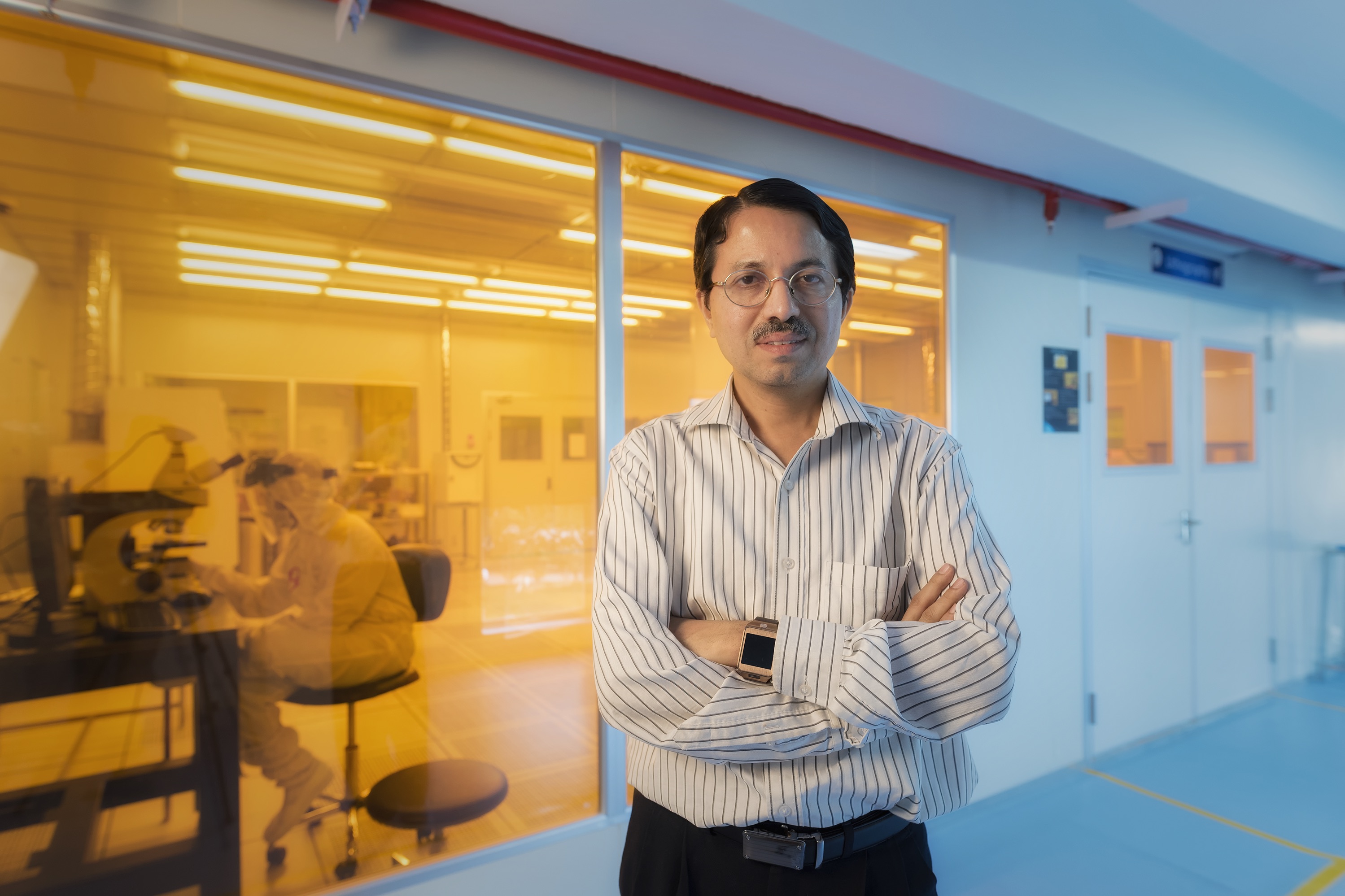
When Navakanta Bhat, the current Chairperson of the Centre for Nanoscience and Engineering (CeNSE), joined IISc, he was interested in using his expertise in nanotechnology to develop biological sensors. This interest took shape when he developed novel electrochemical methods to quantify diabetic markers in pathological specimens. But more remarkably, he has now manufactured a complete point of care diagnostic device, applying those novel techniques to affordable clinical use. The challenges in this decade-long journey from science to technology to marketing formed the crux of his Institute Colloquium which he gave on 20 January 2017.
Bhat began his lecture by introducing the perils of diabetes and the scope of biosensors in managing the disease. Biosensors, unlike traditional enzymatic tests, use simple electrochemical circuits to detect and quantify biological markers, such as blood glucose. The biosensor he and his team have developed detects markers of diabetes, most notably glycated haemoglobin (HbA1c) and glycated albumin (GA). These parameters provide a broader picture of how blood sugar fluctuates over time and are crucial for screening pre-diabetic conditions and gauging diabetes-related complications.
The biosensor Bhat’s team has developed detects markers of diabetes
In the colloquium, Bhat addressed the major scientific challenges he encountered in developing sensors for GA detection. While HbA1c level gives a two-month average of blood glucose activity, measuring GA gives a two-week average, and is therefore more effective in monitoring the disease. However, GA tests are still not widely available in diagnostic labs, and are prohibitively expensive. Albumin is electrochemically inactive, unlike haemoglobin. Also called molecular taxis, they serve as carriers of various chemicals, including metals, in the blood serum. More significantly, only 0.3% of the copper sites in albumin are actually occupied in normal conditions, and therefore albumin can be detected by treating it with copper. This crucial insight helped Bhat’s lab develop biosensors for GA. Similarly, for HbA1c detection, his group came up with dramatic improvements to the existing technology by going back to the fundamentals of electrochemistry.
While all these experiments were working successfully in the labs, Bhat dreamed big: he wanted to create a technology which can run multiple tests on blood and urine samples to manage a multidimensional disease like diabetes. Thus began the second lap of this journey ̶ that of translating the science to a feasible product. This dream finally came true, but not before clearing several obstacles on the way. He and his team have finally launched PathShodh Healthcare, a medical device R&D company, incubated at IISc. Their primary product is the multi-analyte device, a unique scalable point-of-care handheld device, currently capable of performing eight pathological tests.
Bhat and his team have finally launched PathShodh Healthcare, a medical device R&D company, incubated at IISc
During his talk, Bhat also shared the heart-warming story of his former PhD student and current Director and CEO of PathShodh, Vinay Kumar. Kumar, who hails from a small village in Uttar Pradesh, became the first engineering graduate from his village; this, despite his struggles with Type 1 diabetes from an early age. Later, while pursuing a job, he came across Bhat’s research, and immediately connected with the scope of this project, given his own condition. He soon joined Bhat’s lab at IISc, and was involved in many of the crucial steps in developing PathShodh.
As he ended his talk, Bhat shared his advice to those researchers who intend to take their research directly to society: eschew scientific arrogance. He emphasized the importance of not belittling any aspect of this journey by narrating incidents like the time he visited cloth mills to find cheap fabric, or had to fiddle with his phone SD card connector to find innovative solutions to frustrating technological problems.




